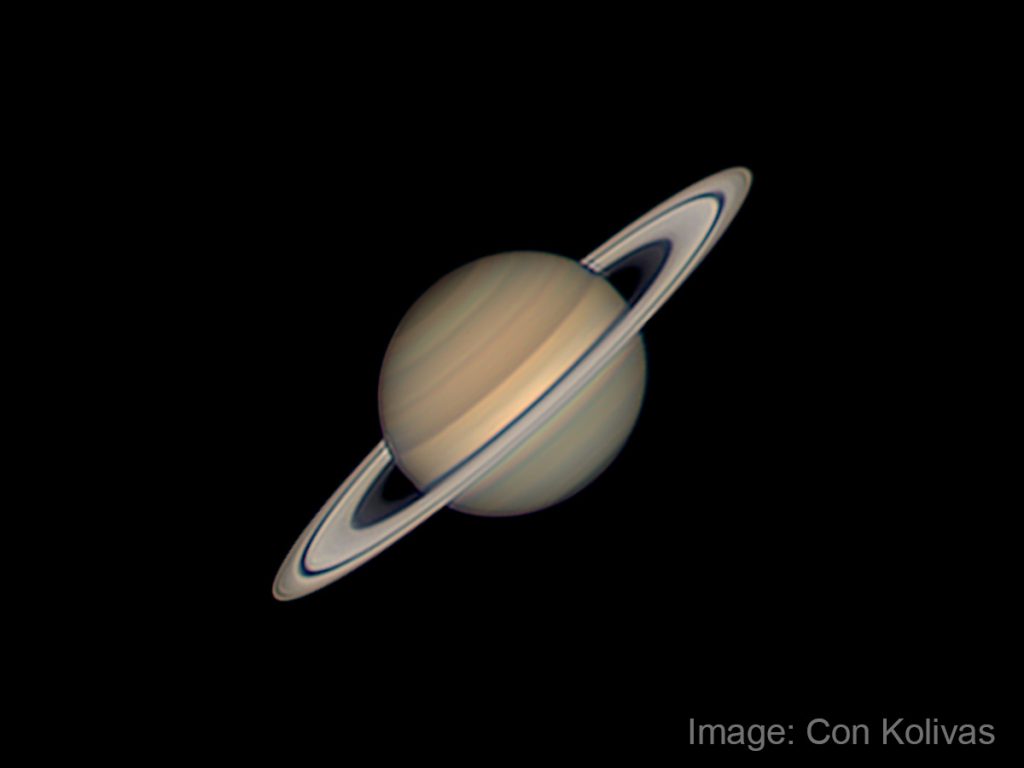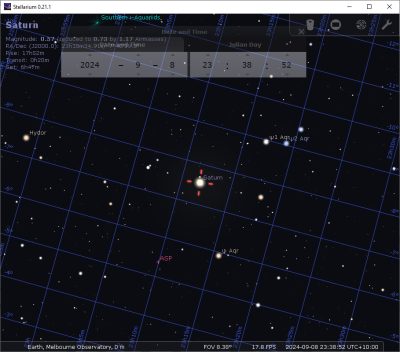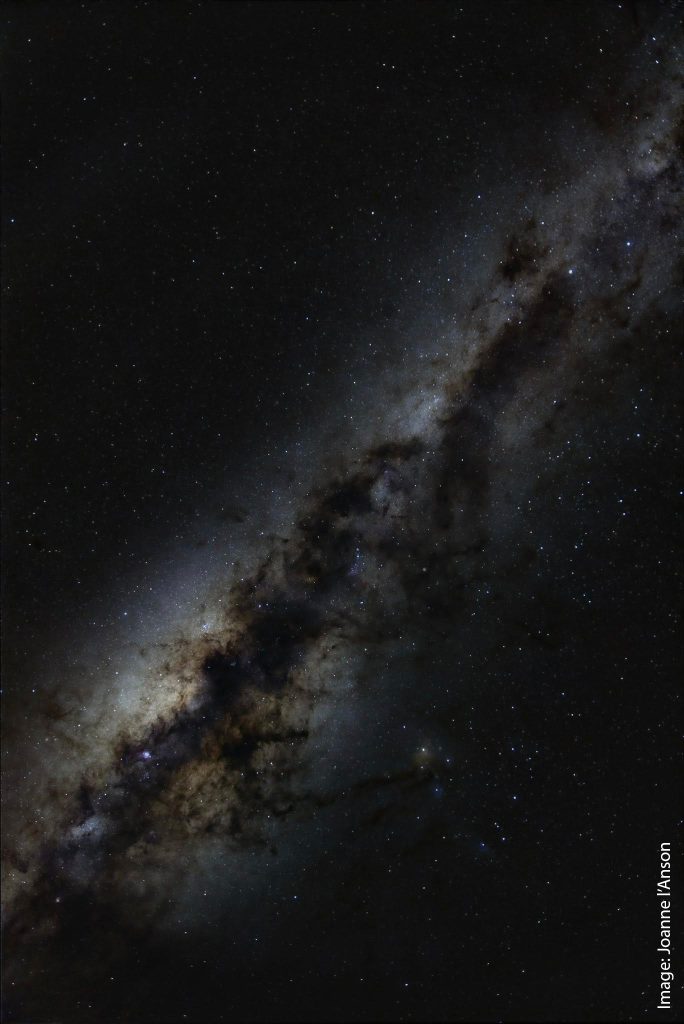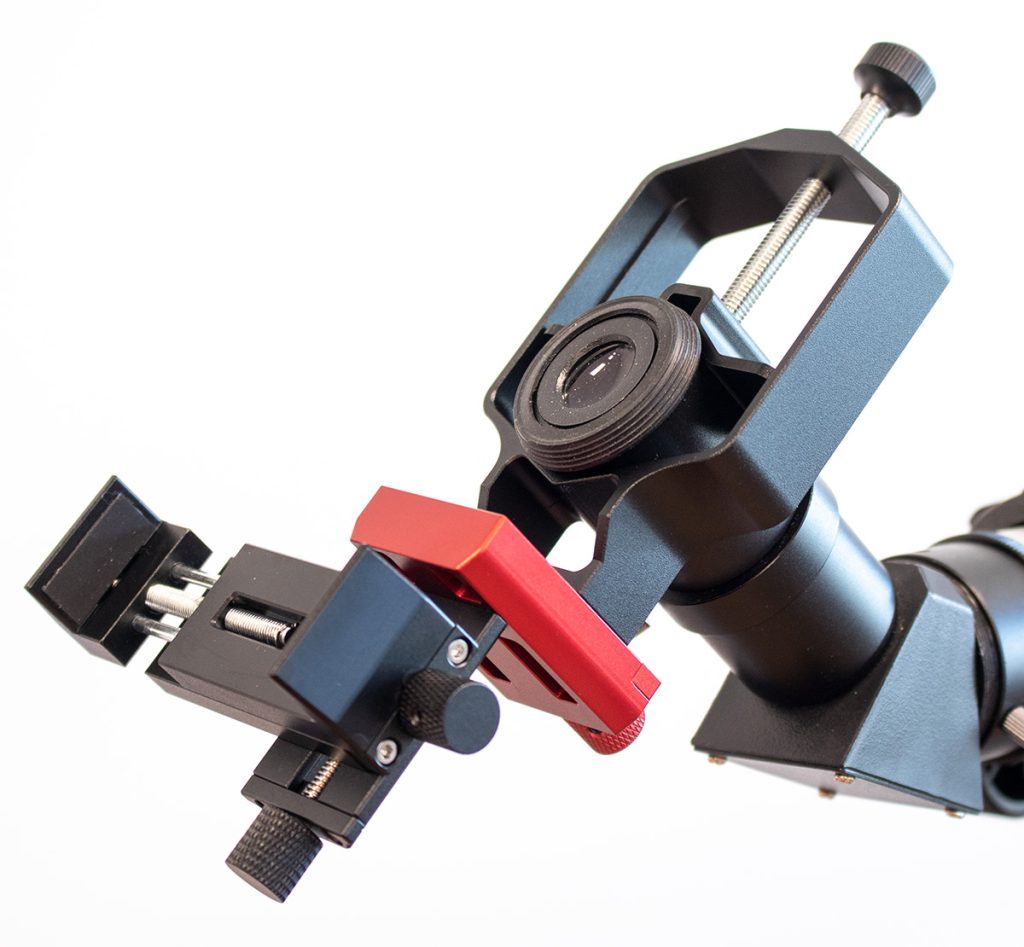If you’ve been watching the sky in the evenings lately, you will have seen Saturn rising above the trees in the East at around 7. It’s rising earlier every night, and will soon be appearing at about the same time as sunset.
When planets rise at sunset (and set at sunrise) it means that – from the Earth’s perspective – they are fully illuminated, or “at opposition”. In other words, the Sun, Earth and Saturn are about to form a straight(ish) line.
The opposition itself isn’t a perfectly straight line, of course. The screen shot from Stellarium shows that Saturn is around 2° from the anti-sun point. Different planets orbit in different planes around the Sun.
Retroreflectivity at opposition
The actual opposition is shortly before midnight on 8 September, and for a few days before and after that, Saturn’s rings will glow brightly. This is because the material that forms the rings has a retroreflective quality. That is, it reflects much of the light that hits it directly back towards the source, like a road sign. You can see this in the image at the top, taken by Con Kolivas at Saturn’s opposition last year.
(Incidentally, you can use retroreflectivity find animals at night by holding a torch to your nose and looking down the beam. Most eyes have a similar retroreflective quality and animals looking back at you will show up as jewels in the dark. And, importantly, if you’re an arachnophobe, I would definitely not recommend doing this.)
Disappearing rings?
Finally, if you look at Saturn right now, you’ll notice it’s rings are closing up. This is caused by the Earth passing through the plane of those rings. That’ll happen in March of 2025. But Saturn is also approaching an equinox of its own. In May 2025, the sun will pass through the ring plane, so the rings won’t cast a shadow. All this means that during early to mid 2025, we won’t see any trace of the rings.
Saturn will look entirely naked! Is this the true spirit of Saturnalia?
Psst… want a telescope?
If you want to see all this, you can do so with a refractor as simple as a saxon 909AZ3 or its twin brother the Sky-Watcher 90/900 AZ3, which will give you enough magnification to get a reasonable view. At the other end of a wide scale, if you want an awesome photographic image, you need something like a CFF 10″ Ritchey-Chrétien.




